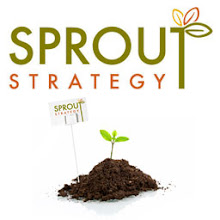What’s softer than cotton, as strong as steel, and able to renew itself and reach full maturity in just 5 years? Nope… It’s not a bird or a plane… it’s SUPER Bamboo!
Bamboo made its way into the “mainstream” eco-world (primarily as an alternative construction material) several years back, and we’ve continued to see its uses proliferate in everything from eco-housing and bamboo flooring, to textiles and bamboo clothing, to bedding, towels, furniture, recreational products, technology, etc., yet many folks don’t know why bamboo is considered eco-friendly and what makes it the ideal material for so many things.
Let’s start with a little background on this panda-loving product (bamboo 101 if you will).
• Technically, bamboo is a grass not a wood, though it’s frequently referred to as a “woody grass”. It also happens to be the fastest growing grass in the world, with some of its more than a 1000 species able to grow at a rate of up to 4 ft. per day (definitely giving Jack’s beanstalk a run for its money)! Its extremely fast growth is part of what makes it such a fantastic renewable resource, available for harvest in just 3 years versus 120 years for oak.
• Bamboo regenerates itself - It can be harvested without damaging the original plant, unlike wood that takes an average of 30 years for a reforestation project.
• Bamboo grows more abundantly than wood – a single stand can generate 200 poles in 5 years, the same time it takes a single tree to grow large enough for minimal use.
• Both trees and bamboo remove CO2 from the atmosphere but bamboo produces over 30% more oxygen than an equivalent stand of trees. (Perhaps we should think about planting bamboo in a our city-wide tree planting efforts rather than trees)
• Bamboo is an amazing natural antibacterial agent. Called “bamboo kun”, bamboo has a natural antibacterial, antifungal so it doesn’t require pesticides and herbicides, making it one of the most maintenance free plants on the planet.
• And since its diverse species can be found all over the world, in places such as…East Asia, Sub-Saharan Africa, Northern Australia, and even in parts of the South Eastern United States and South America, its supplies are endless.
Pretty cool if you ask us!
But all bamboo isn’t created equally green. The difference comes in the manner in which bamboo is processed for our consumption in the form of clothing, household goods, furniture, building materials, etc. Because of this it’s very important to look for two things when purchasing bamboo
1. Look for bamboo that’s been made with water-based, formaldehyde-free adhesives with low/no-VOC finishes, and of course bamboo which uses the “mechanical” method (the crushing of the woody parts and use of natural enzymes to create a mushy substance that can be combed out and spun into yarn) of processing, especially when purchasing fabrics.
2. Ask if it’s FSC Certified. This certification is provided by the Forest Stewardship Council (http://www.fsc.org) which ensures the bamboo has been harvested in a sustainable fashion requiring the bamboo not come at the expense of deforestation of already existing natural forests.
All this said, there’s no denying that bamboo is still a highly renewable and highly sought after resource, and one that you should feel good about purchasing as an alternative to less green options, as long as you’re educated and know what to look for.
As a flooring or furniture option, not only is it beautiful (check out the creator of Sprout’s own bamboo cabinetry right here) and sustainable, it’s also extremely durable and strong. In fact, the tensile strength of bamboo is comparable to steel, and much harder than either maple or oak.
Good sources for great flooring and furniture options are Smith & Fong’s Plyboo, Teragren Modern Bamboo Furniture, and Room and Board
And, while bamboo may not be the #1 most eco-friendly product for use in clothing and other fabrics, it still has amazing health and wellness oriented qualities that you simply may not find in other clothing and bedding products.
• It’s naturally anti-microbial and anti-fungal
• It contains a natural agent (bamboo kun) which requires no harmful chemicals to prevent bacteria and fungus from cultivating on it
• It’s softer than cotton, cashmere and silk, making it ideal for wearing or snuggling up in, especially for little ones!
• It’s practical – more durable and less expensive than silk or cashmere and can be conveniently cleaned in your washer and dryer
• It’s comfortable and breathable, which helps keeps you drier
• It’s hypoallergenic, and non-irritating to the skin.
Check out Kicky Pants bamboo kids wear, Sprout Kids Clothing (unrelated but great name), and Green Earth Bamboo for great bamboo bedding, bath and other apparel options.
Here's to living your best possible life!
Subscribe to:
Post Comments (Atom)




No comments:
Post a Comment